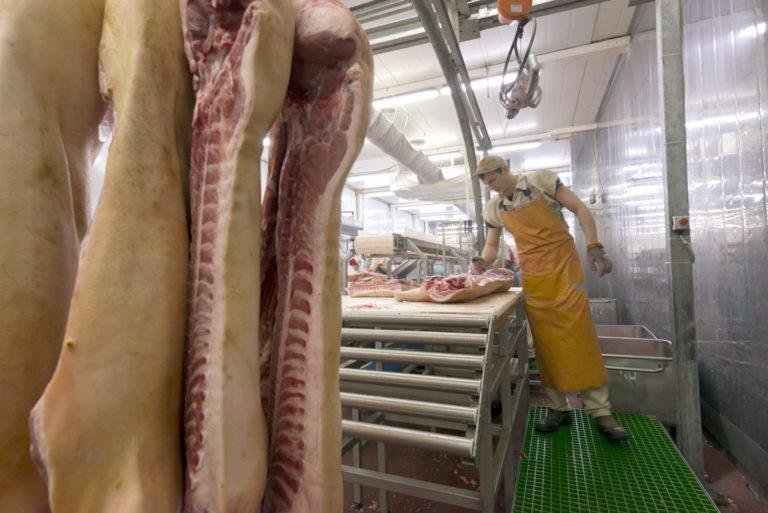In a significant move for the U.S. meat industry, Agriculture Secretary Brooke Rollins announced on March 17, 2025, that the USDA will make permanent its program allowing increased line speeds at pork processing facilities. The directive instructs the Food Safety and Inspection Service (FSIS) to extend waivers permitting pork and poultry facilities to maintain higher line speeds, effectively eliminating administrative requirements that have reportedly slowed production and increased costs for American producers.
Secretary Rollins emphasized America’s global leadership in pork production while highlighting the need to ensure producers remain competitive internationally. “Under President Trump’s leadership, we are cutting unnecessary red tape, empowering businesses to operate more efficiently, and strengthening American agriculture—all while upholding the highest food safety standards,” Rollins stated. The announcement marks a continuation of deregulatory policies that have characterized the administration’s approach to agricultural oversight.
Rulemaking to formalize these speed augmentations will commence forthwith. This process typically involves public comment periods and regulatory review, although the timeline for implementation remains unspecified in the announcement. The National Pork Producers Council expressed deep appreciation for the plan, underscoring the industry’s long-standing advocacy for such measures.
Perhaps most controversially, FSIS will no longer require processing plants to submit worker safety data. The USDA cited “extensive research” confirming no direct correlation between processing speeds and workplace injuries—a claim that will likely face scrutiny from labor advocates who have historically argued that faster line speeds contribute to higher injury rates among plant workers. The administration’s stance highlights the occasionally tense equilibrium between production efficiency and worker protection.
The new policy reflects the culmination of a program that began years earlier. In November 2021, FSIS first permitted increased line speeds under a temporary waiver program. The transition to permanent status represents a significant victory for meat processors who have lobbied for greater operational flexibility. Proponents argue the changes will strengthen U.S. food production capabilities, reduce producer costs, and support a more resilient supply chain without compromising safety standards.
Industry analysts project that these reforms could substantially impact production volumes, although specific projections vary widely depends on how many facilities ultimately implement the higher speeds. Some facility may choose to maintain current speeds due to equipment limitations or other operational factors. The decision to eliminate redundant documentation requirements may also create significant administrative cost savings for processing facilities, potentially translating to improved profit margins or consumer pricing.
The announcement falls squarely within broader efforts to reduce regulatory burdens across multiple agricultural sectors. Such initiatives align with the administration’s economic philosophy of minimizing government intervention in business operations. Critics, however, have expressed concerns about potential impacts on food safety oversight and worker conditions.
Food safety advocates will likely monitor implementation closely, especially since the USDA maintains that these changes will not compromise the “highest food safety standards.” The agency has not provided detailed information about how it will ensure compliance with safety protocols under the accelerated processing environment.
The permanent line speed program represents a notable shift from previous administrations’ approaches to meat processing regulation. Industry representatives have praised the move for its potential to enhance operational efficiency and market competitiveness, while labor organizations may question the decision to eliminate worker safety reporting requirements.
As implementation proceeds, stakeholders across the agricultural sector will watch attentively to assess the real-world impacts of these regulatory changes on production capacity, worker conditions, and food safety outcomes. The permanence of the program suggests a long-term commitment to this regulatory approach, though future administrations could potentially revisit these policies depending on their regulatory philosophies and priorities. The meat processing industry now faces the challenge of balancing increased operational freedom with maintaining public confidence in their products and practices.

